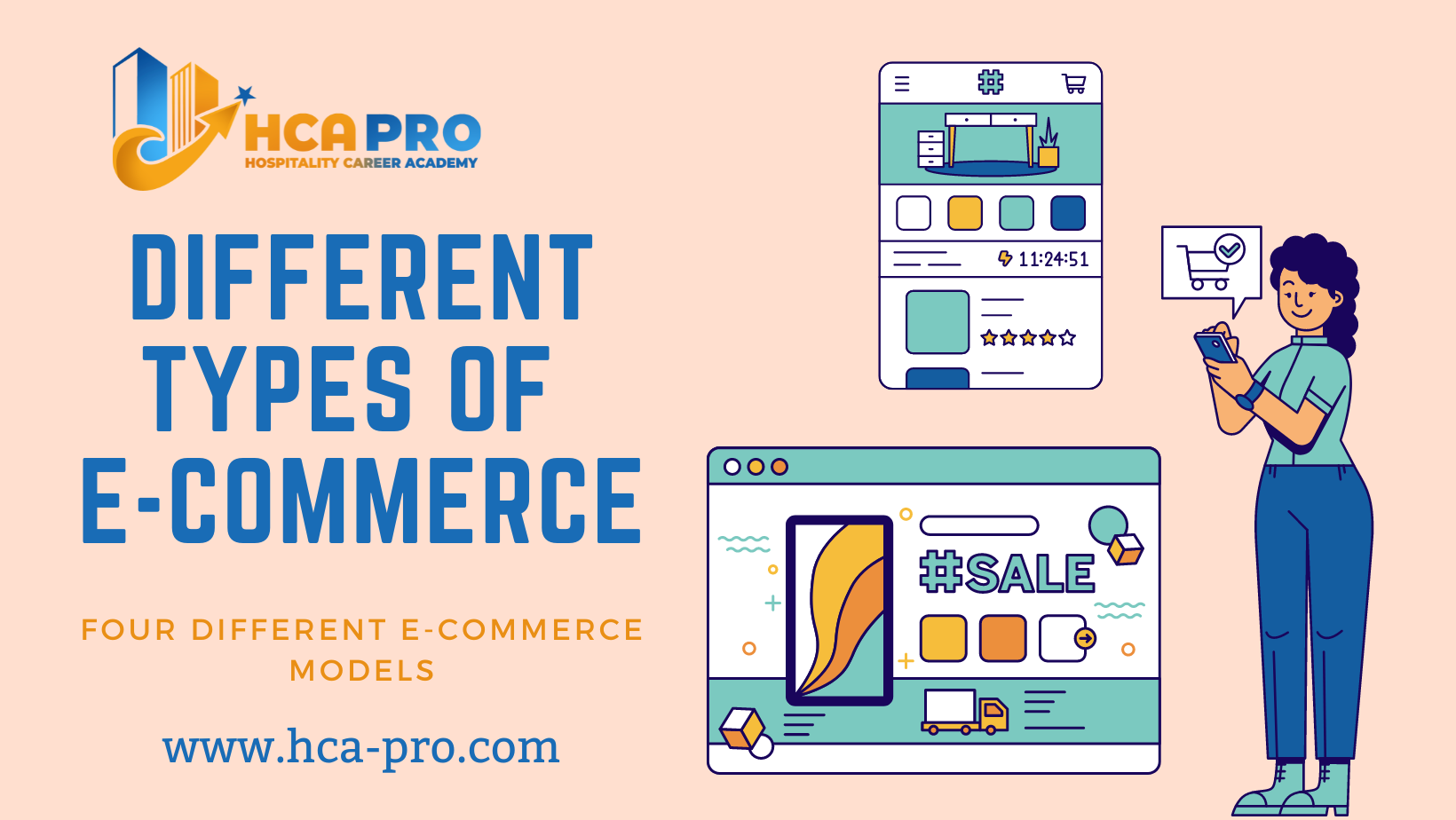
Different Types Of E-commerce
Which term is correct: e-commerce, ecommerce, eCommerce, or simply ecomm? Over the last 30 years, the name and spelling of e-commerce have evolved, as have the technologies and job skills required to work in this field. This reading summarizes the evolution of e-commerce by describing the term's history and laying out the four distinct e-commerce models that have emerged over time.
E-commerce, like most things on the internet, has evolved and changed dramatically in its short existence. What began as electronic commerce evolved quickly into e-commerce, ecommerce, or eCommerce. But how do you choose which one to use? E-commerce will be used in this course. This is due, in part, to the fact that Google Trends — a website that analyzes the popularity of top search queries in Google Search — shows that most people prefer e-commerce over ecommerce or eCommerce. The hyphen emphasizes the fact that the word is a combination of two words.
There are four different e-commerce models.
-
Business-to-consumer (B2C)
-
Consumer-to-consumer (C2C)
-
Business-to-business (B2B)
-
Consumer-to-business (C2B)
When a government entity conducts business online, the word "administration" is substituted for "business," resulting in new e-commerce models such as business-to-administration (B2A) and consumer-to-administration (C2A).
Business-to-consumer (B2C) e-commerce
The most common type of e-commerce is business-to-consumer (B2C). This is the online process by which businesses sell products or services directly to consumers. Some credit the first e-commerce transaction to the American company Pizza Hut (selling a pizza online). Historians recognize, however, that on August 11, 1994, Dan Kohn sold a CD album to a friend in Philadelphia. Using encryption technology, that friend sent his credit card information to pay for the album and shipping costs. Because his credit card information was encrypted, no one could steal it!
Nowadays, B2C e-commerce generates billions of dollars in revenue each year, with encrypted transactions becoming commonplace. With B2C marketing, you can put your digital marketing skills to use in very specific ways. For example, you can specialize in experiential marketing, social media marketing, or even a subset of social media marketing known as influencer marketing.
-
Experiential marketing, also known as engagement marketing, encourages customers to not only buy but also experience a brand or product. Experiential marketing campaigns elicit emotional reactions from their target audiences.
-
Social media marketing is the process of creating content for various social media platforms in order to increase engagement and promote a business or product.
-
Influencer marketing involves enlisting influential people to endorse or mention a brand or product to their social media followers.
Consumer-to-consumer (C2C) e-commerce
Individuals sell products or services to other individuals through consumer-to-consumer (C2C) e-commerce. In other words, consumers buy from one another. In 1982, Boston Computer Exchange developed the first platform for C2C e-commerce. This platform was used by an online community of people to sell their used computers to other users. However, eBay, which was founded in 1995, was the most well-known early C2C e-commerce platform.
C2C e-commerce is still practiced today on platforms such as eBay and Etsy. C2C sales are also conducted on business-to-consumer platforms such as Amazon. Facebook Marketplace, a social media platform, has also entered C2C e-commerce. Because most C2C consumers find each other through blogs and social media posts, digital marketing for a C2C business prioritizes skills in search engine optimization (SEO), content creation, and social media. Their common interests result in C2C transactions to buy and sell goods.
Business-to-business (B2B) e-commerce
Business-to-business (B2B) Businesses can sell products and services to other businesses through e-commerce. The rise of B2B e-commerce was accelerated by the rise of services, particularly software services. This is referred to as Software-as-a-Service (SaaS). Salesforce, which was founded in 1999, is an example of a SaaS company. SaaS companies, such as Salesforce, offer other businesses subscription access to mission-critical services via the internet. Salesforce, for example, offers customer relationship management (CRM) software that integrates sales, marketing, and services for a more personalized customer journey.
Today, many of the skills used by B2B digital marketers are also used by B2C digital marketers. B2B marketing campaigns, on the other hand, necessitate a more precise identification of their target audiences. Selling to businesses necessitates concentrating on communicating immediate value to potential customers. As a result, digital marketing for B2B companies is more strategic. There may be fewer opportunities to specialize in a particular type of marketing, such as social media marketing, and a greater emphasis on marketing analytics and data.
Consumer-to-business (C2B) e-commerce
The popularity of small business ownership aided in the development of another e-commerce model, C2B. Consumers sell their goods or services to businesses through C2B e-commerce. These online transactions also have a need for specialized platforms. Upwork, for example, was founded in 2015 and connects freelancers with businesses that may require their skills and services.
Influencers, who sell their services to promote a company's products, may also fall into this category of e-commerce. With social media's growing influence on consumer decisions, the C2B e-commerce model is likely to expand as well.
The most important key message Of E-commerce
This examination of e-commerce models demonstrates that e-commerce has evolved and will continue to evolve at a rapid pace. Knowing how to apply and learn new digital marketing skills is critical for progressing in this industry.
